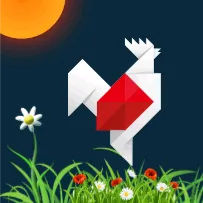Karol Wrótniak
Experienced Mobile Developer with over 14 years of expertise in native Android and Flutter app development. Skilled in creating Gradle plugins and Bitrise steps. Engaged in various projects, especially focusing on testing. A speaker at conferences and meetups such as DevFest, Flutter Global Summit, Mobile DevOps Summit, JDD Conference, Linux Academy, and more. Actively involved as a lead of Google Developers Group Wrocław, Flutter Wrocław, and Bitrise User Group.
Socialization
Skills
- Android
- Flutter
- Kotlin
- Dart
- Java
- C
- Gradle
- Firebase
- Sqlite
- git
- Docker
- Linux
- Bash
- Github
- GRPC
- Bitrise
- OpenGL
- JNI
- Jira
- Confluence
Public Speaking
A collection of talks on meetups, conferences and webinars most likely on CI/CD, testing, Android and Flutter development, but not only.
Conference - From A to Z: Text Traps.
Conference - Texts, dates, numbers, currencies, plurals, legal stuff etc.- App internationalization guide - Android Worldwide April 2024
Conference - State Restoration of Flutter Apps - Flutter Global Summit 2024
Webinar - How to create own Bitrise steps - Mobile DevOps Summit 2023
Conference - Building Accessible Apps with Jetpack Compose - Android Worldwide July 2023
Webinar - State Restoration with Flutter - Flutter Forward GDG Ludhiana Edition
Webinar - Bitrise features that you are not aware of - Mobile DevOps Summit 2022
Webinar - How to work around missing Bitrise features? - BUG — Autumn Edition
Conference - Dates, numbers, currencies, plurals, legal stuff etc.- internationalization guide - Flutter Global Summit 2021
Webinar - Dates, numbers, currencies, plurals, legal stuff etc.- internationalization guide - Huawei Developers Group #1
Webinar - Utility Workflows - Bitrise User Group #7 | WEBINAR
Webinar - Creating own steps - Bitrise User Group #1 | WEBINAR
Webinar - How to create Bitrise steps - GDG Bitrise User Group #2
Conference - Mysterious properties of GIFs - Linux Session #16
Meetup - Bitrise - continuous happiness as a service - Wrocław JUG #109
Conference - Bitrise - continuous happiness as a service - Devfest Wrocław 2018
Conference - Bitrise.io and OpenSTF - CI on a device farm - Linux Session #15
Wait! There's more..
See all Public Speakings for more examples!
Experience
Lead
Organizing and coordinating events, workshops, and meetups that focus on Google technologies.
Android & Flutter Developer
Developing and maintaining Android and Flutter applications and libraries.
Working with clients from all over the world, on projects like Giphy, Livechat, Nice To Fit You and many more.
Creating tools and plugins for the CI/CD process. Recruiting, mentoring and training new employees.
Certifications
Education
Wroclaw University of Science and Technology
Article based on my master thesis: Combined Bayesian Classifiers Applied to Spam Filtering Problem

